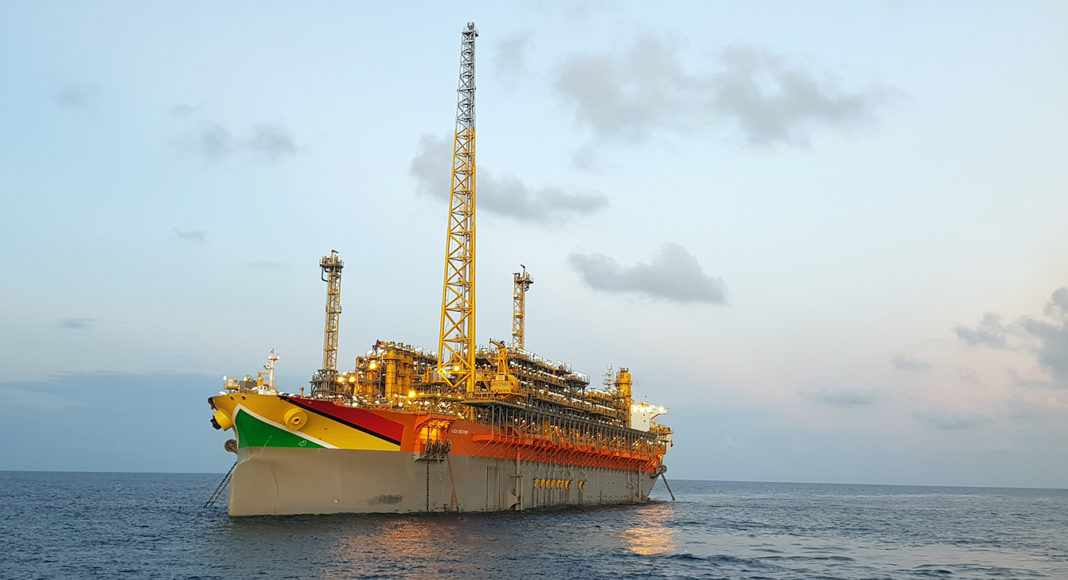A massive infrastructure transformation and construction boom in South America’s lone English-speaking country are the most visible signs of the nation’s newfound wealth which is being delivered by huge oil fields under development offshore. And the latest World Economic Outlook report, published by the International Monetary Fund projects its economy to grow by 38.4% in 2023, making it the fastest-growing country this year, outpacing other nations significantly.
Since 2015, U.S. oil major ExxonMobil has found more than 11 billion barrels of oil equivalent resources at the prolific Stabroek Block offshore Guyana, amounting to 18% of discovered resources and 32% of discovered oil globally.
Three projects are already in production with output set to surpass 600,000 barrels per day early next year. And this is just the beginning.
Guyana surpasses 100 million barrels of oil production in first nine months of 2023
According to Norway-based Rystad Energy, Guyana is expected to produce around 1.7 million barrels of oil per day by 2035 – not accounting for as-yet undiscovered volumes – propelling the country to the fourth position on the list of the largest global offshore oil producers, leapfrogging the US, Mexico and Norway.
Government revenue from domestic production will accelerate to $7.5 billion annually in 2030, Rystad Energy says, pointing out, “Low breakevens and below-average emissions intensity in the Stabroek [Block] will propel Guyana from a relatively small producer to a global leader in the coming years, solidifying the country’s position as a competitive and policy-friendly player for offshore production.”
Guyana has raked in over US$1.1 billion in oil revenue so far this year
The energy research and business intelligence company says the cost of supply is a significant factor in considering the desirability of assets and comparing them to other sources and regions. Guyana’s competitive breakeven costs, which average $28 per barrel across all projects and less than $20 for producing projects, is helping to transform the country into a global heavyweight in offshore production.
“Guyana’s offshore oil fields are some of the most competitive supply sources outside of the Middle East and offshore Norway and are cheaper than the US onshore heavyweight the Permian, Russia and many other sources,” says Rystad Energy.
In addition, emissions intensity from offshore activity in Guyana is lower than the global average for oil and gas production and deepwater offshore production, further strengthening the country’s position through the energy transition. Upstream emissions from Guyana’s deepwater activities average 9 kilograms of CO2 per boe, comparable to Brazil and slightly higher than Norway.
Latin America’s crude oil production to soar in 2024
Notwithstanding highly favorable predictions for Guyana, Rystad Energy says it is strong institutional governance, transparency and regulatory practices that will be vital to unlocking the full potential of the country’s resource wealth for its people.




